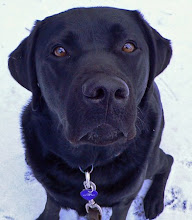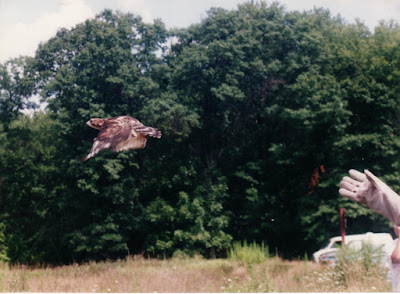Quality of Life, by Katherine McKeever
What can we say about "quality of life" for wildlife that has not been said, over and over, by many tongues? The problem is not in finding other words to describe its meaning, the problem is that the meaning itself is not endorsed by the actions of so many wildlife handlers. Why is this? Is it because they have not yet succeeded in putting aside their own emotions and beliefs, clearing their thoughts of everything except a rational look at the quality of life available to the creature in hand?
What gives quality of life to wildlife: the fact of being at liberty, however briefly and precariously, the ability to make all the choices, the fulfilling of an evolutionary role. And also the restoration of freedom when it was almost lost forever. But what about the ones that are permanently maimed? Ah yes, what about them? Is euthanasia the only answer? No, but it is usually the best answer. Euthanasia can be an end to pain and terror, a compassionate and moral alternative to a captive life so diminished in quality that its maintenance is really an act of cruelty. And when permanent damages makes freedom suicidal, and release irresponsible, the chances for a life of quality in captivity are narrowed to the very expensive for the very few. Here is an example of what should be provided, in order to justify the life maintenance of a damaged wild creature - a creature that was born free and will remember freedom all its life, a creature that will never be tame. Let us suppose it is an owl, unable to fly.
Can you provide it with an enclosure as long and as high as it should have had when it could fly? It will need the same size for its psychological health. It will need high branches and a way to climb up to them, where it will feel safe. It will need arboreal pathways to other parts of the cage, both high and low. It must be able to choose between thick branches and thin ones, sheltered and exposed roosts, sun and shade, cavities and open platforms.
It must have a wide, shallow, non-sloping pool and a log or a rock beside it for ablutions. It needs a lifelong diet of the natural prey items of the species. It needs the opportunity for companionship with another if its own kind (preferably of the opposite sex) but also the ability to be alone in its own space. It needs to be left alone by humans. It needs every possible choice that you can think of to give it, even if you can never give it the one thing it never stops waiting for.
If you can do all these things, then you will have reduced stress (the biggest killer of them all) to the point where your bird will never get sick, never need medication, and may even make babies as it lives on to its potential life-span. And then you will be able to say truly that you gave it a life of quality.
But first, there is something you should know, even if it breaks your heart. For all your long hours, and physical effort, and the expense, and the arguments with others over your priorities, and even your genuine affection for this creature you have come to love, there will be one thing missing from its life. And if you leave the cage door open, it will opt for that one thing above all the others that were provided, and it will walk out of the door to freedom and its death. Because this is the way of all wildlife.
(Kitt Chubb, regarding goals and ethics of wildlife rehabilitators)




 and not the left, to which he has equal access? (Under my bed looks like a mouse nest.)
and not the left, to which he has equal access? (Under my bed looks like a mouse nest.)